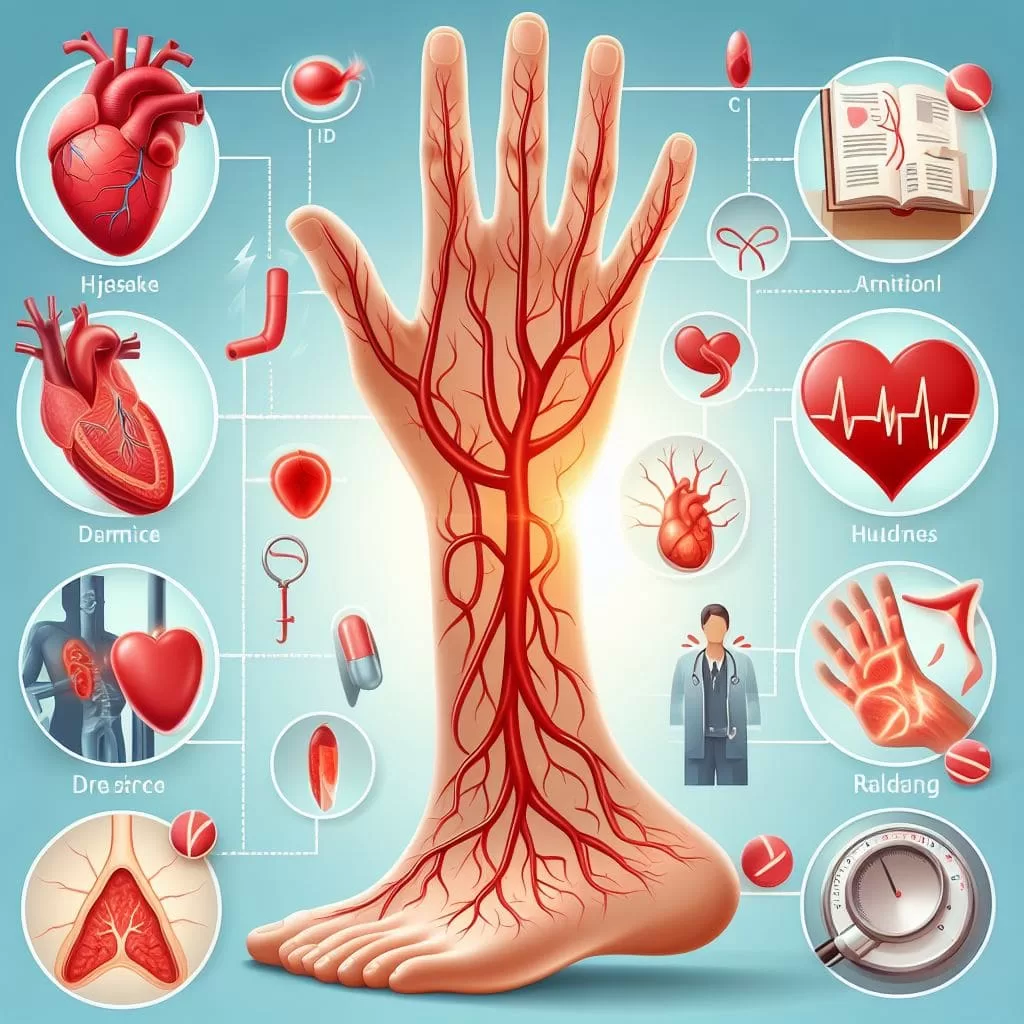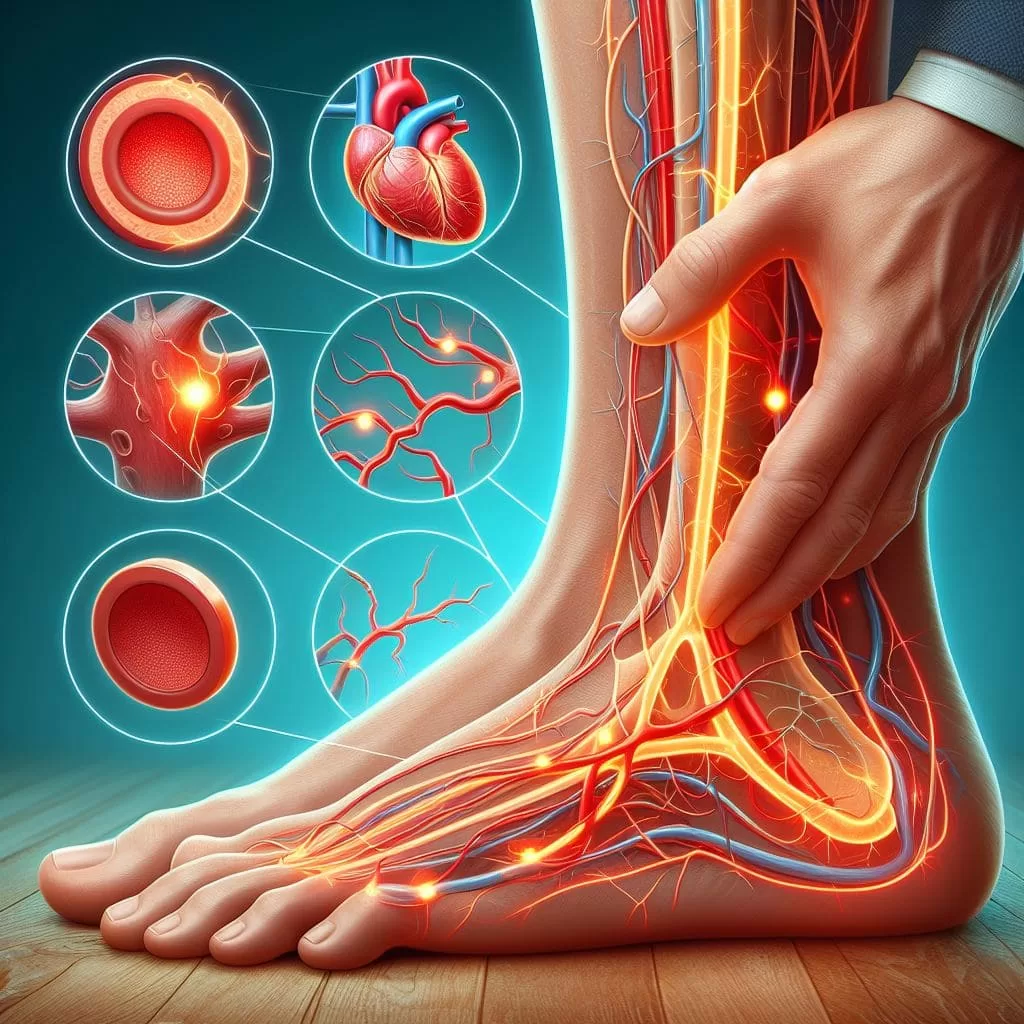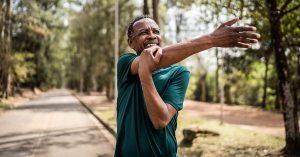Symptoms of Peripheral Artery Disease (PAD) and How to Manage Them
The hallmark symptom of peripheral artery disease (PAD) is pain when walking. More advanced PAD may cause pain at rest and other symptoms that need immediate attention.
Like coronary artery disease, PAD results from plaque buildup in certain arteries. That buildup causes blockages and reduced blood flow.
PAD involves your peripheral arteries, which run from your heart to other parts of your body. While most people experience PAD in their legs and feet, up to 10% of people from s may also experience the effects in their arms and hands.
While a small number of people may experience no symptoms from PAD, there are usually early warning signs of this serious condition. Learn more about the symptoms of PAD, including how a doctor may recommend treating them.

Douleur
Pain and achiness are among the most common symptoms of PAD. This type of pain often arises from everyday physical activities, such as walking, and then stops when you rest. It most often affects muscles in your lower body, such as your legs and hips.
As PAD progresses, the pain may persist, even during rest.
Despite the pain that PAD causes during physical activity, it’s important to get regular exercise to help increase blood flow in your body. A doctor may recommend exercising at least three times per week.
Limb ischemia and PAD
Severe pain when at rest may be a symptom of critical limb ischemia, a severe form of PAD. Critical limb ischemia develops over a long period of time. Sudden symptoms may indicate acute limb ischemia, which is a medical emergency.
“Ischemia” refers to decreased blood flow, and “limb ischemia” means that circulation in a limb (usually your leg) is at a level of concern. If left untreated, limb ischemia can lead to gangrene (tissue death) or amputation.
Was this helpful?
Crampes
Cramps from PAD often occur along with pain. Also called intermittent claudication, PAD-related cramps develop when your muscles don’t get enough blood during physical activity. While they can commonly affect your legs, painful cramps can also radiate as far as your buttocks and feet.
Cramps and pain can decrease your ability to walk. But staying active is important for reducing PAD symptoms and cardiovascular-related complications.
A doctor may enroll you in a supervised exercise program or recommend a plan you can do at home. They may set a goal for you to walk for up to 30 minutes at a time without stopping.
Numbness or tingling
Numbness or tingling may accompany pain and cramps from PAD. Most notably, you may feel these in your calf muscles and throughout your legs during physical activity.
However, a sudden loss of feeling in your leg or foot while you’re resting may indicate acute limb ischemia. If you notice these symptoms, along with sudden paleness, call 911 or your local emergency number right away. Emergency medical treatment is needed to help prevent amputation.
Décoloration de la peau
A blockage from PAD may eventually cause skin discoloration. This may affect patches of skin on your legs, feet, or toes. Skin discoloration can range from paleness to blue or black.
This may also be a symptom of acute limb ischemia, which requires immediate medical attention.
Temperature changes
When PAD causes a blockage or a decrease in blood flow, you may experience skin temperature changes. In these cases, you might have one leg that is noticeably colder than the other. It may also feel cooler than other parts of your body.
If you experience temperature changes, seek emergency medical help, as this is another possible symptom of acute limb ischemia.

Ulcers
As PAD progresses, ulcers may develop, particularly in your lower legs, feet, and toes. These wounds may heal more slowly than usual and may return after healing. In severe cases, ulcers from PAD don’t completely heal, leading to infections.
Infected ulcers are most likely to develop in people who have both PAD and diabetes. Depending on the severity of the infection, a doctor may recommend antibiotics or hospitalization.
You can help prevent ulcers from PAD by wearing well-fitting socks and shoes every day.
Reduced nail and hair growth
Over time, reduced blood circulation from PAD can affect the growth of your toenails and the hair on your legs. You may notice that your hair and toenails are brittle, break easily, and grow back more slowly than usual.
While there isn’t one specific treatment for the nail and hair growth effects of this condition, treating PAD itself may help improve these symptoms over time.
Pictures of PAD symptoms

VIEW ALL
Poor blood circulation from PAD can contribute to skin color changes. PS3000/Getty Images
Does peripheral artery disease always cause symptoms?
PAD doesn’t always cause noticeable symptoms. Experts estimate that 1 out of 5 people with PAD don’t experience symptoms.
As one 2021 research article notes, screening for PAD—both symptomatic and asymptomatic cases—is important to catch this condition early and help prevent complications.
Whether you currently have PAD symptoms or not, it’s important to see a doctor for regular health checkups if you have risk factors such as:
- Diabète
- a history of smoking
- cardiovascular disease
Was this helpful?
Frequently asked questions
Below are other frequently asked questions about PAD that you may consider discussing further with a doctor.
What is the best sleeping position for people with peripheral artery disease?
Severe PAD may cause symptoms at night when you’re trying to rest, making it difficult to sleep. While few studies point to the effects of specific sleeping positions for PAD, one small older study suggests that sleeping with your legs downward can encourage circulation.
What is the best exercise for people with peripheral artery disease?
Walking is one of the most common forms of exercise recommended for people with PAD because it helps increase blood circulation and reduce inflammation. It’s also a low-impact activity.
Depending on whether a doctor recommends a formal exercise program, you can walk outdoors or on a treadmill.
What are the stages of peripheral artery disease?
Doctors use different systems to classify how advanced PAD is. In general, they consider the earliest stage to be asymptomatic. The next stage is claudication, which causes symptoms when you’re walking.
The later stages involve limb ischemia, which causes pain when you’re at rest. Conditions such as acute limb ischemia, gangrene, and ulcers typically represent the most severe stage of PAD.
Emporter
PAD involves blockages in your peripheral arteries, which make it difficult for blood to flow to different parts of your body. This condition is most likely to affect your legs and feet.
Because some PAD symptoms are also symptoms of other conditions, it can be easy to mistake PAD for something else, such as arthritis. That’s why it’s important to consult a doctor if you’re experiencing any of the symptoms mentioned above.
You might also consider seeing a doctor if you have symptoms and risk factors for PAD, such as diabetes, high blood pressure, and high cholesterol. An accurate diagnosis can ensure that you get the treatments you need to help prevent complications.








Peripheral Artery Disease (PAD) is a condition characterized by narrowed arteries in the legs, arms, or head. PAD can limit blood flow to these areas, leading to various symptoms, including pain, numbness, and weakness. Understanding the symptoms and proper management strategies is crucial for maintaining good vascular health.
**Symptoms of Peripheral Artery Disease (PAD) and How to Manage Them:** Learn about the signs and symptoms of PAD, a condition where arteries in the legs, arms, or head become narrowed. Discover effective management strategies and ways to maintain vascular health.